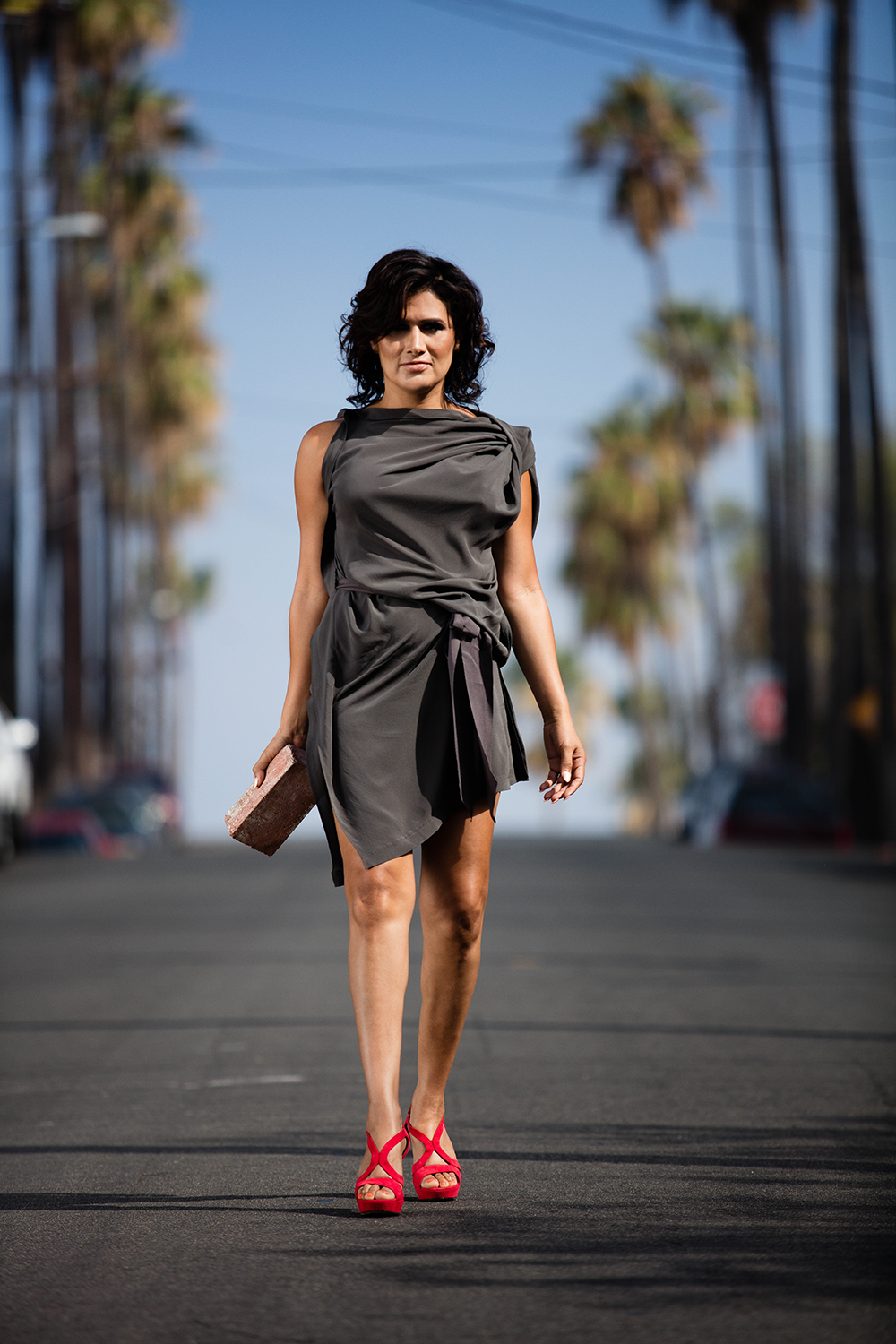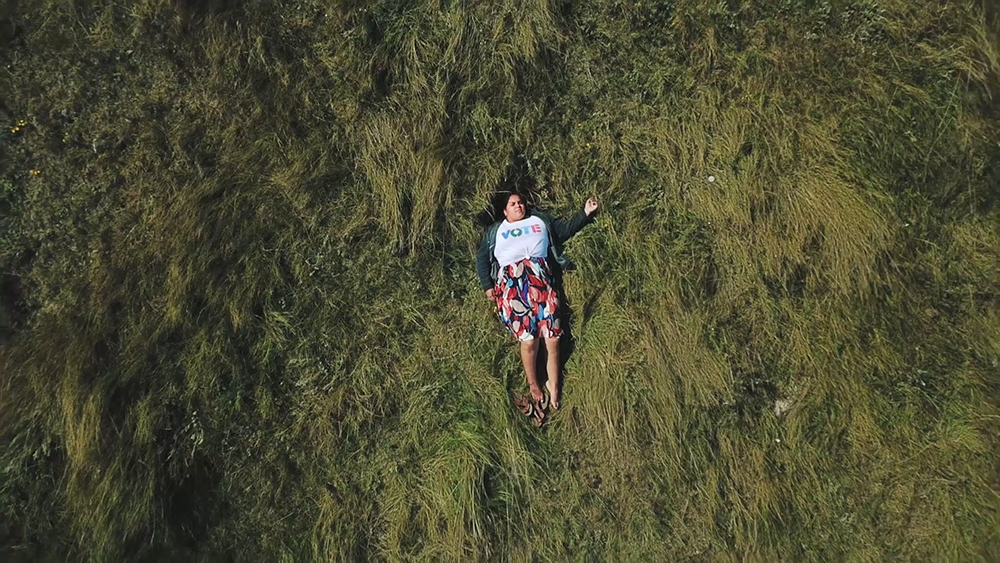In swirls of citrus yellow and lipstick red, a neon sign just inside the entrance proclaimed: My Body My Choice, Her Body Her Choice. The words of protest—framed by recycled cardboard to echo the font’s curvaceous forms—seemed to flash a prescient warning the day the exhibition opened. By the end of the week, Roe vs. Wade was struck dead.
Set in the decade prior to the landmark legislation’s birth, other artworks tell Roe’s backstory. The installation Letters to an Army of Three, Displayed (2005), with its 1960s sherbet-hued wallpaper, blissfully evoked an era of limited options. Through emotionally tinged letters interspersed between the colorful patterns, young women appeal to an activist group to seek illegal abortions. In Make My Story Count, Letters to Planned Parenthood (2011), writers express gratitude for reproductive healthcare, their stories revealing the cruel policies that harmed them.
Andrea Bowers’ art embodies a multitude of timely issues. For decades she has amplified causes from human rights to protecting the environment. Activist chants ring throughout her work: as colorful, neon-lit slogans; as huge drawings made of black marker on collaged cardboard inspired by vintage agitprop; as signs held by demonstrators who are singled out from a crowd and drawn small on large paper, encouraging us to see the individual behind the collective; as silence, embodied in a sculpture made with shredded wood from a clearcut forest, gathered after the protests failed.
Bowers’ art speaks both subtly and loudly. Subtle, in the ways she communicates through activism, as an observer. Loud, because through her practice, she hands over the proverbial megaphone to those who are outspoken. This is evident in videos she makes about activists she admires, like forest defender John Quigley, whose tree-occupying tactics convinced Bowers to join in; and Indigenous rights activist Tokata Iron Eyes, a member of the Standing Rock Sioux tribe, whose youth and ebullience belie a determination to stop the Dakota Access Pipeline. One understands how personalities shape movements.

Andrea Bowers, Trans Liberation: Beauty in the Street (Johanna Wallace) (in collaboration with Ada Tinnell), 2016. Courtesy of the artists and Andrew Kreps Gallery, New York.
Bowers is fascinated by women activists of today and in history. Her female subjects are often larger than life—literally. There’s Betsy Warrior, a 1970s activist against domestic violence, whose own artwork of a young woman performing a kick boxing move inspired Bowers’ depiction of her in Disarm Rapists (2017). There’s a series of photographs of trans women, also shown in superhero mode. In Trans Liberation, Beauty in the Street (Johanna Wallace) (2016), a dark-haired woman strides toward the camera in bright red shoes, framed by palm trees and dramatic light. It takes a moment to notice the brick in her hand.
Sometimes Bowers employs “women’s work” materials, like fabric, to make a point. Soft Blockade (Feminist Blockade) (2004) is a quilt with a chain-link fence pattern stitched across it. In the exhibition it hung like a barricade between galleries. The piece evokes civil-disobedience tactics—protestors interlocking bodies as a means to resist and disrupt—but also the barriers that shut them out from contested sites.
A similar visual element, razor-wire fencing, repeats across a series of floor-to-ceiling drawings called No Olvidado—Not Forgotten (2010). Only up-close do you realize that the relentless chain-link pattern is comprised of names of migrants who died crossing the US-Mexico border.
It’s astonishing how Bowers can find the perfect visual metaphor and precisely apply it, even across varied subject matter. But the greatest strength of her work is in how she links symbolic imagery to the mythologies of America; all those broken promises of equality and freedom.
In My Name Means Future (2020), we see Tokata Iron Eyes in the land of her ancestors. We look down from the sky in an overhead tracking shot and watch herds of buffalo sweep across grasslands, the scene ending with a single, standing beast. In Bowers’ art, we’re repeatedly reminded of what’s lost, but also what’s worth fighting for, even when the odds are stacked.


